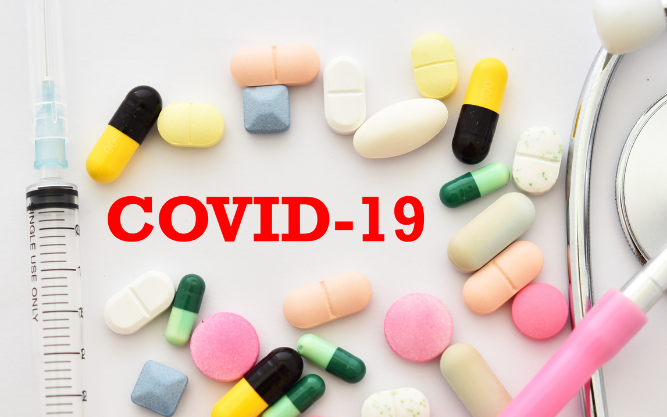
COVID-19 may have led to a spike in antibiotic resistance
A new analysis shared by Medical News Today suggests that hospital-acquired, antibiotic-resistant infections increased in the United States during the COVID-19 pandemic. The spike in resistance was especially high amongst hospital patients with COVID-19 and researchers theorize that poor infection control and increased antibiotic prescribing throughout the pandemic may be to blame.
For this study, researchers compared the rate of antimicrobial-resistant (AMR) infections in 271 hospitals from July 2019 to February 2020 with the rate from March 2020 to October 2021. The total number of hospital admissions increased by more than 1.9 million during the pandemic with an AMR rate of 3.47 per 100 admissions. In addition, the AMR rate in patients who tested positive for SARS-CoV-2 was 4.92, which was higher than the rate for those who tested negative or did not test for COVID-19.
To determine if patients developed their infection before or after being admitted to the hospital, researchers defined infections cultured in the hospital two days or less after admission as “community-onset” and those cultured over two days after admission as “hospital-onset.” They found a decline in the community-onset AMR rate from 2.76 pre-pandemic to 2.61 during the pandemic, and an increase in the hospital-onset AMR rate from 0.77 to 0.86. The hospital-onset AMR rate was highest at 2.18 for every 100 admissions in patients who tested positive for SARS-CoV-2.
Dr. Karri Bauer, study author and Merck pharmacist, attributes the increase in hospital-acquired infections to a “reflection of multiple factors during the pandemic, including the potential higher severity of illness for COVID-19 patients, longer hospital length of stay, and infection control and antimicrobial stewardship practices, particularly early in the pandemic.” Although physician knowledge increased over the pandemic to better identify the patients most at risk to develop bacterial infections, Bauer believes “it is imperative to continue to evaluate AMR and determine strategies to mitigate this global health threat.”
Dr. Aaron E. Glatt, chair of the department of medicine and chief of infectious diseases at Mount Sinai South Nassau, believes that unnecessary prescribing throughout the pandemic contributed to AMR resistance. He believes that lengthy hospital stays, secondary infections in COVID-19 patients, and the high use of steroids and immune-suppressing agents also led to the increase in resistance. Glatt stated “physicians should not prescribe antibiotics when there is no clear evidence that they are needed or beneficial” and hopes that lessons learned from the COVID-19 crisis could alleviate resistance in future outbreaks.
Click here to view this article.
May 2022
TRADUCCIÓN DE GOOGLE:
COVID-19 puede haber provocado un aumento en la resistencia a los antibióticos (nuevo)
Un nuevo análisis compartido por Medical News Today sugiere que las infecciones resistentes a los antibióticos adquiridas en hospitales aumentaron en los Estados Unidos durante la pandemia de COVID-19. El aumento de la resistencia fue especialmente alto entre los pacientes hospitalizados con COVID-19 y los investigadores teorizan que el control deficiente de la infección y el aumento de la prescripción de antibióticos durante la pandemia pueden ser los culpables.
Para este estudio, los investigadores compararon la tasa de infecciones resistentes a los antimicrobianos (RAM) en 271 hospitales desde julio de 2019 hasta febrero de 2020 con la tasa de marzo de 2020 a octubre de 2021. La cantidad total de ingresos hospitalarios aumentó en más de 1,9 millones durante la pandemia con una tasa de AMR de 3,47 por 100 admisiones. Además, la tasa de AMR en pacientes que dieron positivo para SARS-CoV-2 fue de 4.92, que fue más alta que la tasa para aquellos que dieron negativo o no dieron prueba para COVID-19.
Para determinar si los pacientes desarrollaron su infección antes o después de ser admitidos en el hospital, los investigadores definieron las infecciones cultivadas en el hospital dos días o menos después de la admisión como “inicio en la comunidad” y aquellas cultivadas durante dos días después de la admisión como “inicio en el hospital”. Encontraron una disminución en la tasa de RAM de inicio en la comunidad de 2,76 antes de la pandemia a 2,61 durante la pandemia, y un aumento en la tasa de RAM de inicio en el hospital de 0,77 a 0,86. La tasa de AMR de inicio hospitalario fue más alta con 2,18 por cada 100 admisiones en pacientes que dieron positivo para SARS-CoV-2.
La Dra. Karri Bauer, autora del estudio y farmacéutica de Merck, atribuye el aumento de las infecciones adquiridas en el hospital a un “reflejo de múltiples factores durante la pandemia, incluida la posible mayor gravedad de la enfermedad para los pacientes con COVID-19, una estadía hospitalaria más prolongada y prácticas de control de infecciones y administración de antimicrobianos, particularmente al comienzo de la pandemia”. Aunque el conocimiento de los médicos aumentó durante la pandemia para identificar mejor a los pacientes con mayor riesgo de desarrollar infecciones bacterianas, Bauer cree que “es imperativo continuar evaluando la AMR y determinar estrategias para mitigar esta amenaza para la salud mundial”.
El Dr. Aaron E. Glatt, presidente del departamento de medicina y jefe de enfermedades infecciosas en Mount Sinai South Nassau, cree que la prescripción innecesaria durante la pandemia contribuyó a la resistencia a la AMR. Él cree que las estadías prolongadas en el hospital, las infecciones secundarias en pacientes con COVID-19 y el alto uso de esteroides y agentes inmunosupresores también llevaron al aumento de la resistencia. Glatt afirmó que “los médicos no deben recetar antibióticos cuando no hay evidencia clara de que sean necesarios o beneficiosos” y espera que las lecciones aprendidas de la crisis de COVID-19 puedan aliviar la resistencia en futuros brotes.
Haga clic aquí para ver este artículo.
mayo 2022


Comentarios recientes